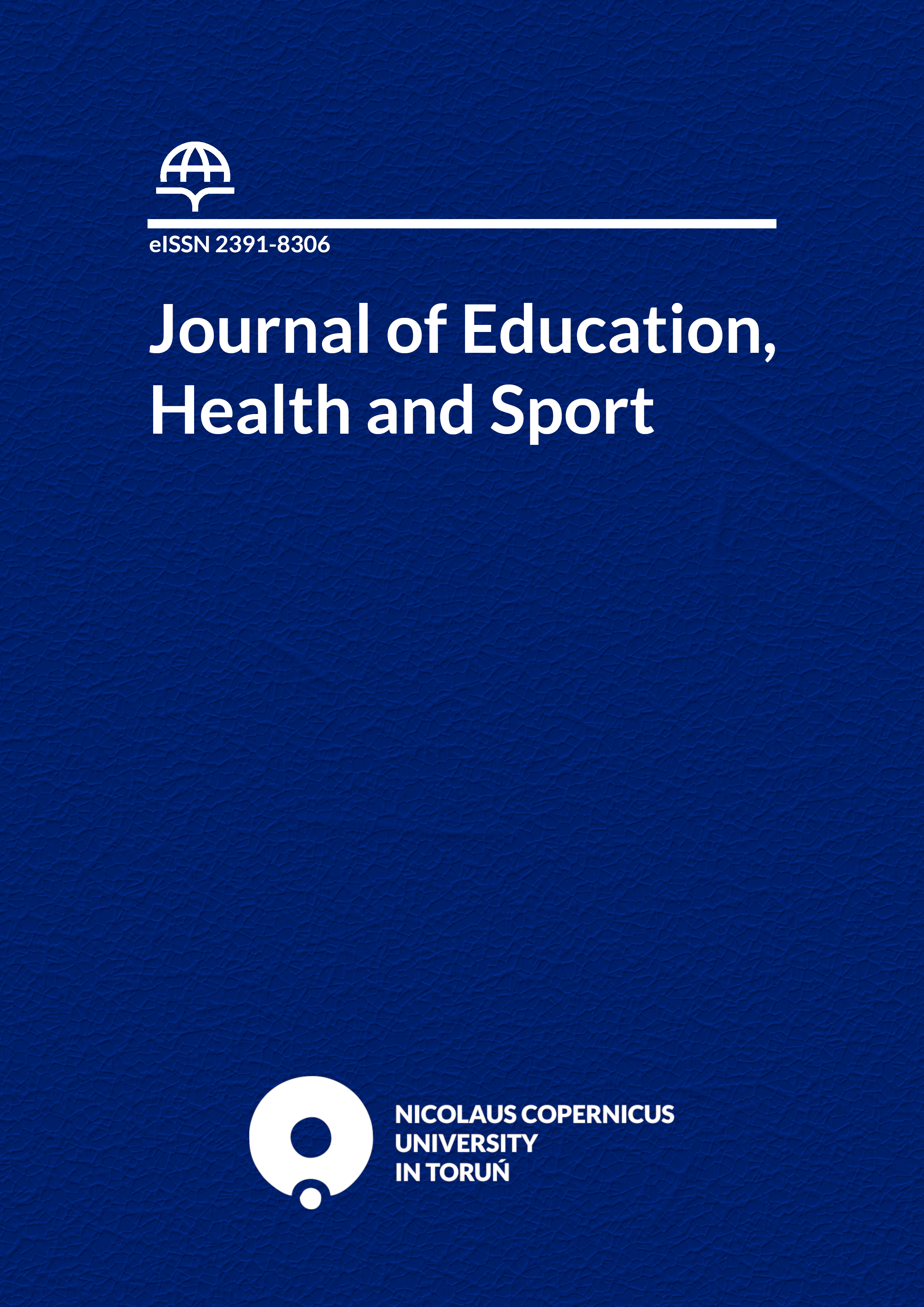The Treatment of ADHD in Adults: Efficacy and Safety of Stimulants and Non-Stimulants
DOI:
https://doi.org/10.12775/JEHS.2025.83.60705Keywords
ADHD, ADHD treatmentAbstract
Attention-Deficit/Hyperactivity Disorder (ADHD) is a neurodevelopmental condition with a complex etiology involving neurobiological, neuropsychological, and genetic factors. It is associated with brain structural and functional abnormalities, particularly in areas linked to executive functions, such as the prefrontal cortex and cerebellum. Disruptions in neurotransmission, particularly involving dopamine, norepinephrine, and serotonin, contribute to symptoms like impulsivity, hyperactivity, and inattention. Genetic studies reveal a strong hereditary basis, with variants related to dopaminergic and serotonergic systems. Although no single biomarker can definitively diagnose ADHD, a comprehensive diagnostic approach integrating clinical, neurophysiological, and neuroimaging data is necessary.
Treatment strategies for ADHD in adults include pharmacological and non-pharmacological approaches. First-line medications are stimulants like methylphenidate and amphetamines, which improve attention and impulse control by increasing dopamine and norepinephrine levels. Non-stimulants, such as atomoxetine and guanfacine, are used when stimulants are contraindicated. While stimulants are more effective, non-stimulants may benefit patients with comorbid conditions. Treatment should be personalized, considering symptom severity, comorbidities, and treatment adherence. Neuroimaging shows that stimulants increase brain activity in areas related to cognitive control, while non-stimulants provide a more stable pharmacokinetic profile. A combined approach is essential for optimal ADHD management.
References
[1]Choi W-S, Woo YS, Wang S-M, Lim HK, Bahk W-M (2022) The prevalence of psychiatric comorbidities in adult ADHD compared with nonADHD populations: A systematic literature review. PLoS ONE 17(11): e0277175. https://doi.org/10.1371/journal.pone.0277175
[2] Ferranti AS, Luessen DJ, Niswender CM. Novel pharmacological targets for GABAergic dysfunction in ADHD. Neuropharmacology. 2024 May 15;249:109897. doi: 10.1016/j.neuropharm.2024.109897. Epub 2024 Mar 8. PMID: 38462041; PMCID: PMC11843668.
[3] Liechti MD, Valko L, Müller UC, Döhnert M, Drechsler R, Steinhausen HC, Brandeis D. Diagnostic value of resting electroencephalogram in attention-deficit/hyperactivity disorder across the lifespan. Brain Topogr. 2013 Jan;26(1):135-51. doi: 10.1007/s10548-012-0258-6. Epub 2012 Oct 9. PMID: 23053601.
[4] Mick E, Faraone SV. Genetics of attention deficit hyperactivity disorder. Child Adolesc Psychiatr Clin N Am. 2008 Apr;17(2):261-84, vii-viii. doi: 10.1016/j.chc.2007.11.011. PMID: 18295146.
[4] Franco De Crescenzo, Samuele Cortese , Nicoletta Adamo, Luigi Janiri (2017) Pharmacological and non-pharmacological treatment of adults with ADHD: a meta-review. doi: 10.1136/eb-2016-102415. Epub 2016 Dec 19.
[5] Victoria Nimmo-Smith, Andrew Merwood, Dietmar Hank, Janet Brandling, Rosemary Greenwood, Lara Skinner, Sarah Law, Viran Patel, Dheeraj Rai [2020] Non-pharmacological interventions for adult ADHD: a systematic review
DOI: https://doi.org/10.1017/S0033291720000069
[6] Nuno Madeira, Gustavo França , Gustavo Jesus, João M Fernandes, Susana S Almeida, Carlos N Filipe. [2025] Attention Deficit/Hyperactivity Disorder in Adults: Position of Portuguese Experts on Diagnosis and Treatment. DOI: 10.20344/amp.22149
[7]Miller, A. H., & Raison, C. L. (2016). The role of inflammation in depression: From evolutionary imperative to modern treatment target. Journal of Psychiatric Research, 74, 1–10. https://doi.org/10.1016/j.jpsychires.2015.10.004
[8] Dündar, Ü., Aşık, G., Ulaşlı, A. M., Sınıcı, Ş., Yaman, F., Solak, Ö., Toktaş, H., & Eroğlu, S. (2013). Pulsed electromagnetic field therapy for management of osteoarthritis-related pain, stiffness and physical function: Clinical experience in the elderly. Journal of Clinical Rheumatology: Practical Reports on Rheumatic & Musculoskeletal Diseases, 19(3), 287–293. https://doi.org/10.1111/1756-185X.12565
[9]Arnsten, A. F. T. (2006). Stimulants: Therapeutic actions in ADHD. Neuropsychopharmacology, 31(11), 2376–2383. https://doi.org/10.1038/sj.npp.1301164
[10]Rubia K, Alegria AA, Cubillo AI, Smith AB, Brammer MJ, Radua J. Effects of stimulants on brain function in attention-deficit/hyperactivity disorder: a systematic review and meta-analysis. Biol Psychiatry. 2014 Oct 15;76(8):616–28. doi:10.1016/j.biopsych.2013.10.016.
[11] Markowitz, JS, Yu, G. (2016). Stimulants and Other Non-stimulants for Attention-Deficit/Hyperactivity Disorder (ADHD). W: Jann, M., Penzak, S., Cohen, L. (red.) Applied Clinical Pharmacokinetics and Pharmacodynamics of Psychopharmacological Agents. Adis, Cham. https://doi.org/10.1007/978-3-319-27883-4_12
[12] Kattura, RS, Crismon, ML (2016). Klinicznie istotne interakcje ze stymulantami i innymi niestimulantami w przypadku ADHD. W: Jann, M., Penzak, S., Cohen, L. (red.) Zastosowana farmakokinetyka kliniczna i farmakodynamika środków psychofarmakologicznych. Adis, Cham. https://doi.org/10.1007/978-3-319-27883-4_21
[13] Budur K, Mathews M, Adetunji B, Mathews M, Mahmud J. Non-stimulant treatment for attention deficit hyperactivity disorder. Psychiatry (Edgmont). 2005 Jul;2(7):44-8. PMID: 21152160; PMCID: PMC3000197.
[14] Ferdous Isfandnia,Sahid El Masri,Joaquim Radua,Katya Rubia, The effects of chronic administration of stimulant and non-stimulant medications on executive functions in ADHD: A systematic review and meta-analysis, https://doi.org/10.1016/j.neubiorev.2024.105703
[15] Artur Wiśniewski, Atomoxetine in the pharmacotherapy of hyperkinetic syndrome, Psychiatr Psychol Klin 2020, 20(1), p. 71–76 DOI: 10.15557/PiPK.2020.0009
[16] Piotr Janik, Behawioralne, farmakologiczne i neurochirurgiczne leczenie tików — aktualny stan wiedzy; Katedra i Klinika Neurologii Warszawskiego Uniwersytetu Medycznego; SOURCE-WORK-ID: 84327b56-1233-48e0-bedb-0bfb8737527d
Część ISSN: 1734-5251
[17] Coghill, D. (2013). Leczenie farmakologiczne osób dorosłych z ADHD bez środków pobudzających. W: Surman, C. (red.) ADHD u osób dorosłych. Current Clinical Psychiatry. Humana Press, Totowa, NJ. https://doi.org/10.1007/978-1-62703-248-3_6
[18] Castells, X., Ramos-Quiroga, J. A., Bosch, R., et al. (2011). Efficacy of methylphenidate for adults with attention-deficit hyperactivity disorder: A meta-regression analysis. CNS Drugs, 25(2), 157-169.
[19] Faraone, S. V., Buitelaar, J. K. (2010). Comparing the efficacy of stimulants for ADHD in children and adolescents using meta-analysis. European Child & Adolescent Psychiatry, 19(4), 353-364.
[20] Groom, M. J., Cortese, S. (2022). Non-stimulant medications for ADHD: Mechanisms, efficacy, and emerging treatments. Journal of Clinical Psychiatry, 83(1), 456-469.
[21] Kuczenski, R., Segal, D. S. (2002). Effects of methylphenidate on dopamine and behavior: Relevance to therapeutic effects in ADHD. Journal of Neuroscience, 22(15), 6153-6161.
[22] Pliszka, S. R. (2007). Pharmacologic treatment of attention-deficit/hyperactivity disorder: Efficacy, safety, and mechanisms of action. Neuropsychology Review, 17(1), 61-72.
[23] Cortese, S., Adamo, N., Mohr-Jensen, C., et al. (2018). Pharmacologic treatment of ADHD: A meta-analysis of effects on the adult population. JAMA Psychiatry, 75(4), 348-355.
[24] Swanson, J. M., Arnold, L. E., Kraemer, H. C., et al. (2007). Long-term outcomes in children and adults with ADHD: Impact of pharmacotherapy. Journal of Child Psychology and Psychiatry, 48(3-4), 210-217.
Downloads
Published
How to Cite
Issue
Section
License
Copyright (c) 2025 Elżbieta Leszczyńska-Knaga, Ewa Chodkowska, Natalia Jakubczyk, Kinga Dominiczak, Katarzyna Szafrańska, Aleksandra Mucha, Sylwia Graszka, Aleksander Szeps, Patrycja Dominiczak, Kinga Bielas

This work is licensed under a Creative Commons Attribution-NonCommercial-ShareAlike 4.0 International License.
The periodical offers access to content in the Open Access system under the Creative Commons Attribution-NonCommercial-ShareAlike 4.0
Stats
Number of views and downloads: 1324
Number of citations: 0



